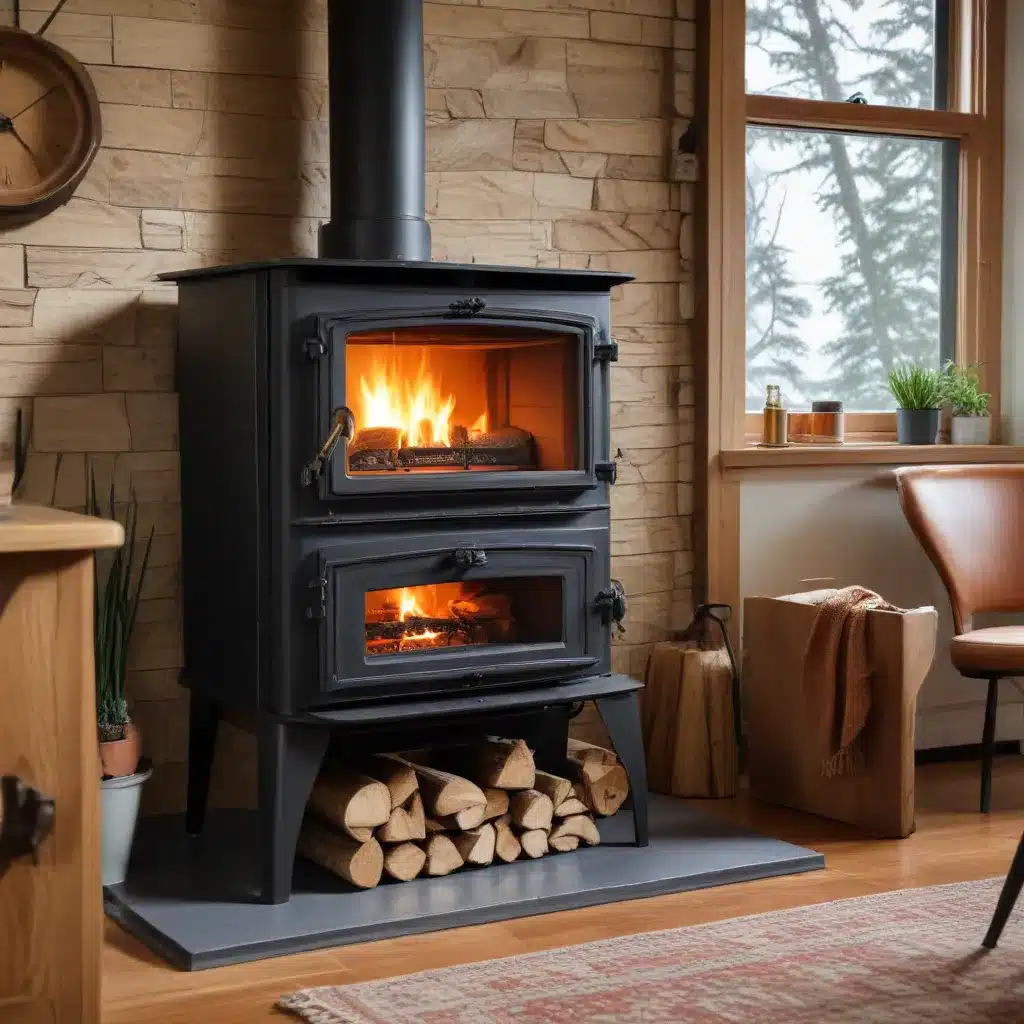
Optimizing Your Wood Stove’s Performance for Maximum Warmth and Savings
As a seasoned expert in wood stoves and heating solutions, I’m excited to share practical tips and in-depth insights to help you elevate the efficiency of your wood stove. Whether you’re looking to maximize warmth, minimize fuel consumption, or extend the lifespan of your fireplace, this comprehensive guide will equip you with the knowledge and techniques to transform your wood stove into a true heating powerhouse.
Understanding the Fundamentals of Wood Stove Efficiency
At the heart of a wood stove’s performance lies its efficiency – the ability to convert the energy stored in wood into usable heat for your home. Many factors contribute to a wood stove’s efficiency, including the design, fuel quality, airflow management, and proper maintenance.
One of the key determinants of efficiency is the wood stove’s combustion process. A well-designed stove with optimal air intake and airflow can achieve complete combustion, extracting the maximum amount of heat from the wood. Conversely, inefficient combustion can result in wasted fuel, increased emissions, and diminished warmth.
Optimizing Air Intake and Airflow
Proper air management is crucial for ensuring efficient wood stove operation. Start by ensuring that your stove’s air intake vents are clean and unobstructed, allowing for a steady supply of oxygen to fuel the combustion process. Consider installing an external air intake kit, which can draw in air directly from the outside, rather than relying on air from the room.
Next, focus on optimizing the airflow within the stove. Many modern wood stoves feature advanced air control systems that allow you to precisely regulate the amount of air entering the firebox. Experiment with different air settings to find the sweet spot that delivers the most complete combustion and heat output.
Maintaining a Hot, Efficient Burn
Achieving a hot, efficient burn is essential for maximizing the heat output from your wood stove. Begin by using well-seasoned, high-quality firewood that has been dried for at least 6-12 months. Avoid wet or unseasoned wood, as it can lead to inefficient combustion, increased creosote buildup, and reduced heat output.
When loading the firebox, arrange the wood in a way that allows for optimal airflow and oxygen circulation. Stacking the logs in a crisscross pattern, rather than piling them on top of each other, can help promote a more complete burn. Additionally, consider using smaller, denser wood species, such as oak or maple, which tend to burn hotter and more efficiently than softer woods.
Optimizing Insulation and Heat Circulation
The efficiency of your wood stove can be further enhanced by ensuring that your home is well-insulated and that the heat it produces is effectively circulated throughout the living space.
Start by identifying any areas in your home where heat may be escaping, such as drafty windows, doors, or gaps in the insulation. Addressing these issues through weatherstripping, caulking, or added insulation can significantly improve the overall efficiency of your wood stove heating system.
To maximize heat circulation, consider installing a fan or blower system to distribute the warm air throughout the room or even the entire home. Some wood stoves come equipped with built-in fans, while others can be retrofitted with aftermarket models. Strategically placed fans can help ensure that the heat generated by your wood stove is evenly distributed, providing consistent warmth and comfort.
Maintaining and Cleaning Your Wood Stove
Regular maintenance and cleaning are essential for maintaining the efficiency and longevity of your wood stove. Begin by inspecting the stove’s components, such as the door gaskets, firebricks, and ash grate, to ensure they are in good condition. Replace any worn or damaged parts to prevent air leaks and maintain optimal performance.
Regularly remove ash buildup from the firebox, as excessive ash can restrict airflow and impede the combustion process. Consult your stove’s manufacturer’s guidelines for the recommended ash removal frequency and techniques.
Additionally, schedule professional chimney cleaning and inspection at least once a year. A clean, well-maintained chimney will help ensure proper draft and prevent the buildup of creosote, which can be a fire hazard.
Upgrading to a High-Efficiency Wood Stove
If your current wood stove is outdated or inefficient, it may be time to consider upgrading to a newer, high-efficiency model. Modern wood stoves are designed with advanced combustion systems and materials that can significantly improve heat output, reduce emissions, and lower fuel consumption.
When selecting a new wood stove, look for models that are certified by the Environmental Protection Agency (EPA) or have a high overall efficiency rating. These stoves incorporate features such as secondary combustion chambers, catalytic converters, and sophisticated air control systems to maximize efficiency and minimize environmental impact.
While the initial investment in a high-efficiency wood stove may be higher, the long-term savings on fuel costs and the improved heating performance can make it a worthwhile investment, especially for homeowners looking to reduce their reliance on traditional heating sources.
Conclusion
By implementing the practical tips and strategies outlined in this comprehensive guide, you can elevate the efficiency of your wood stove and enjoy enhanced warmth, reduced fuel consumption, and a more sustainable heating solution for your home. Remember, every small improvement you make can contribute to a more efficient, cost-effective, and eco-friendly wood stove heating system.
If you’re in the market for a new wood stove or have any additional questions about optimizing your existing setup, be sure to visit https://woodstoveheaters.com/ for more expert insights and resources.


